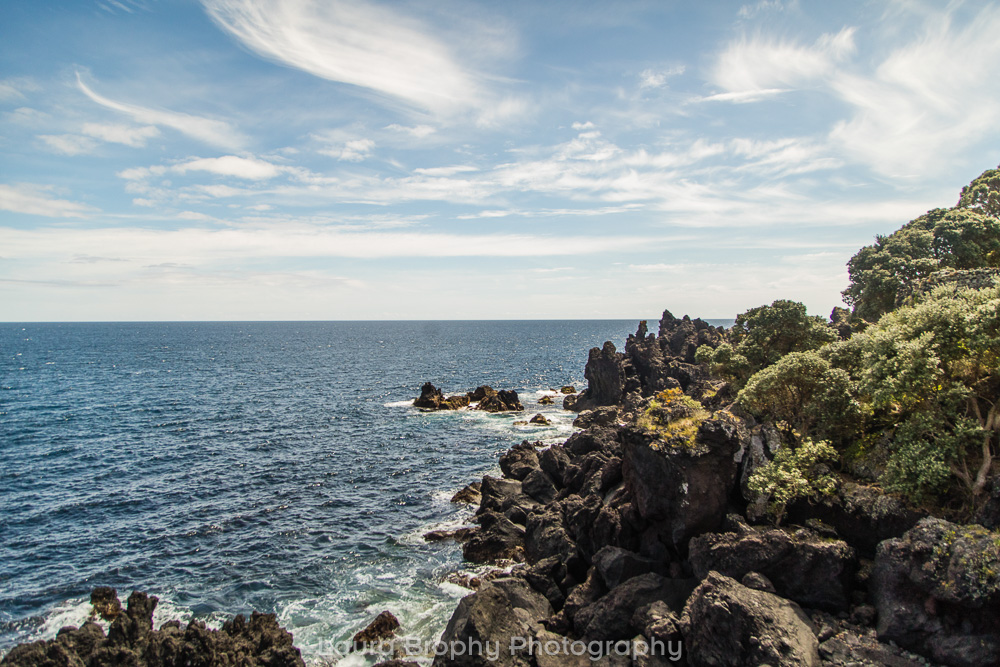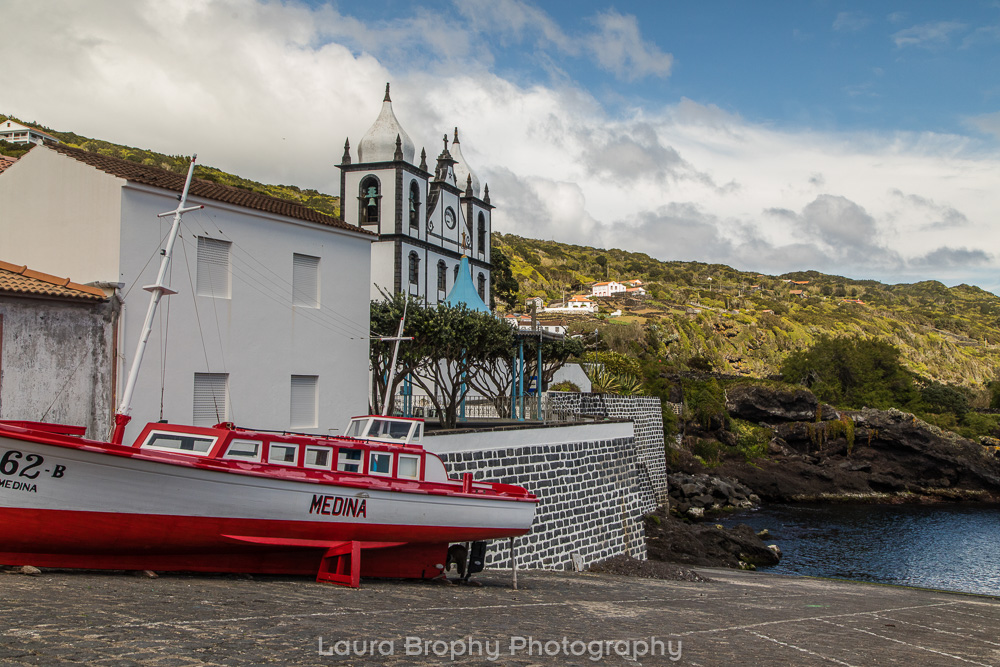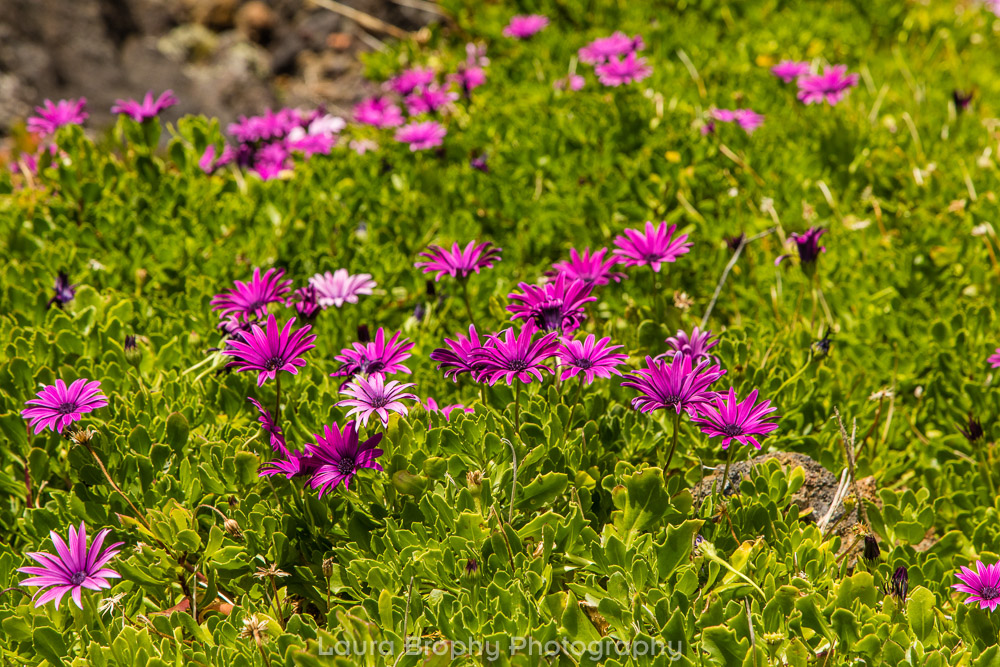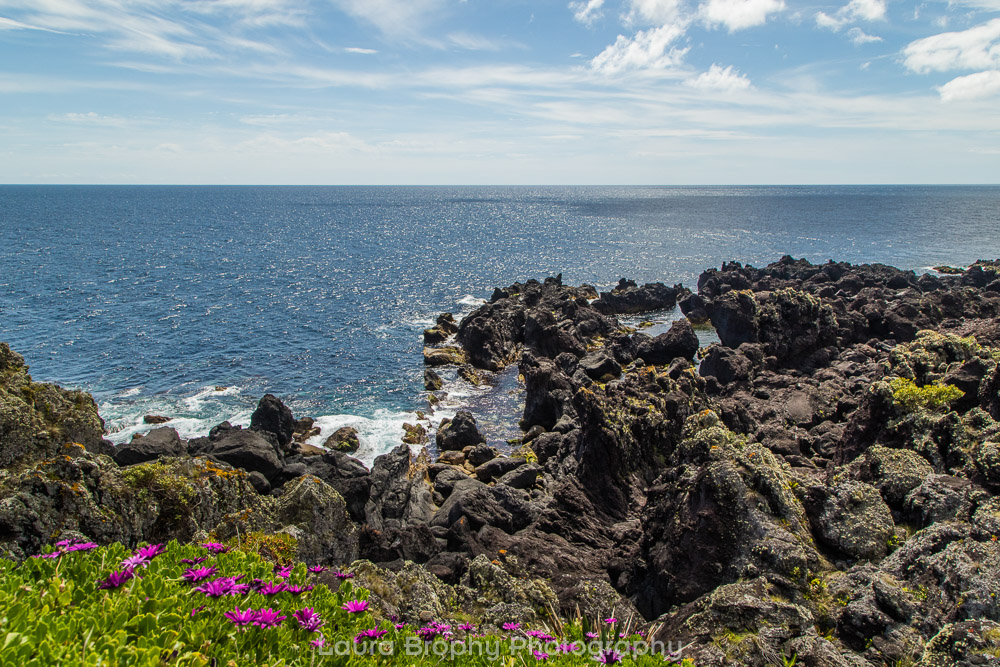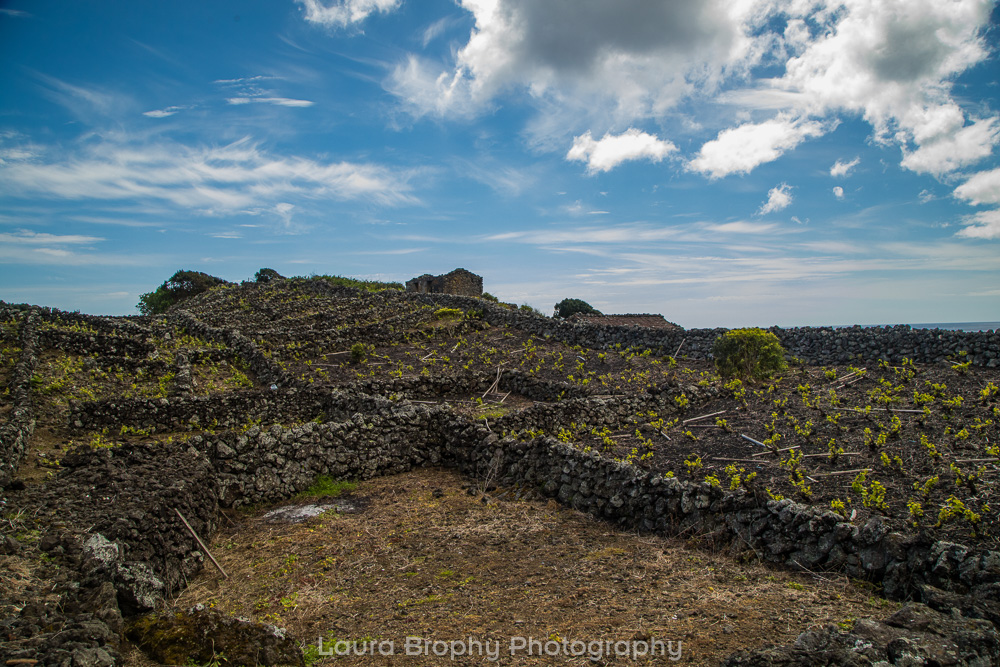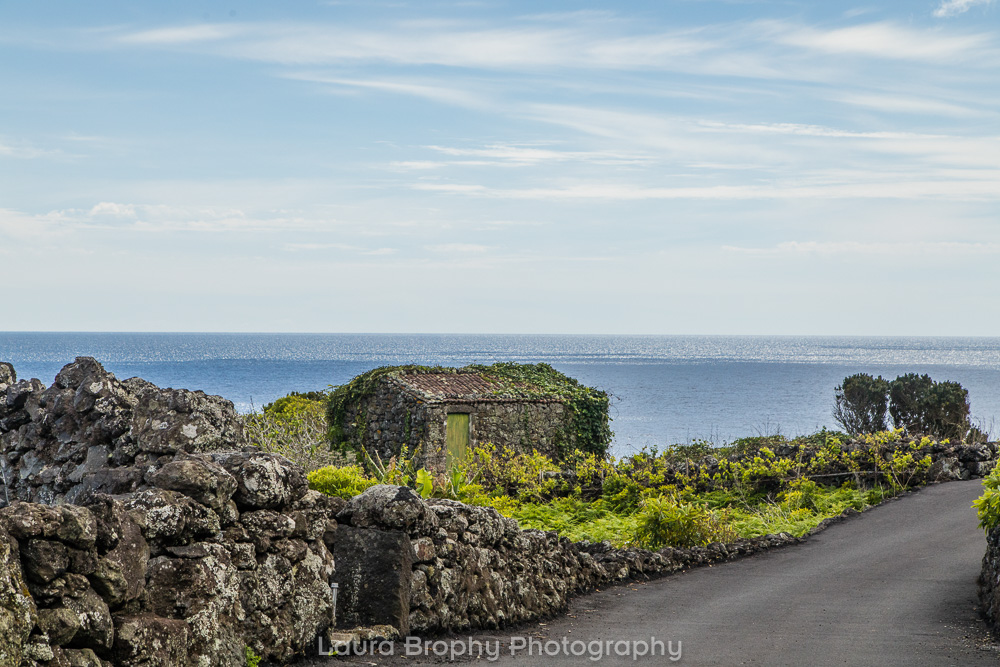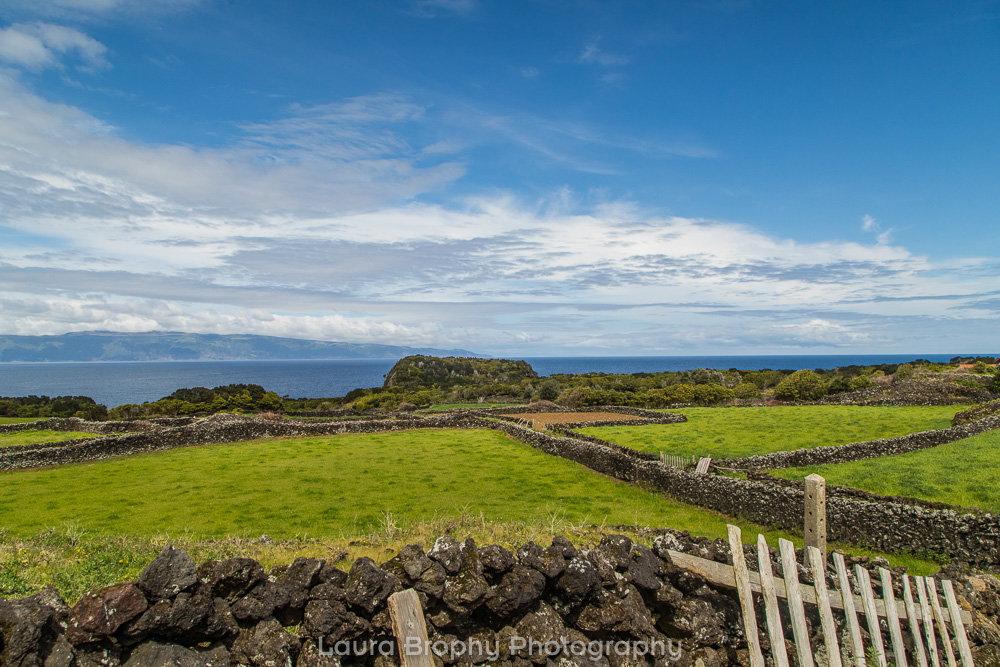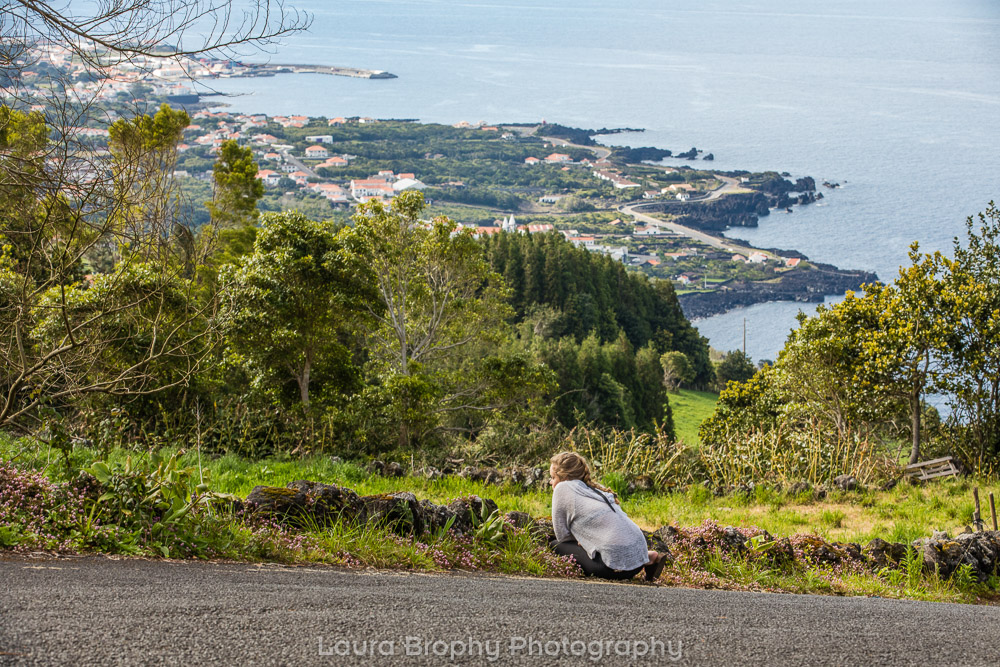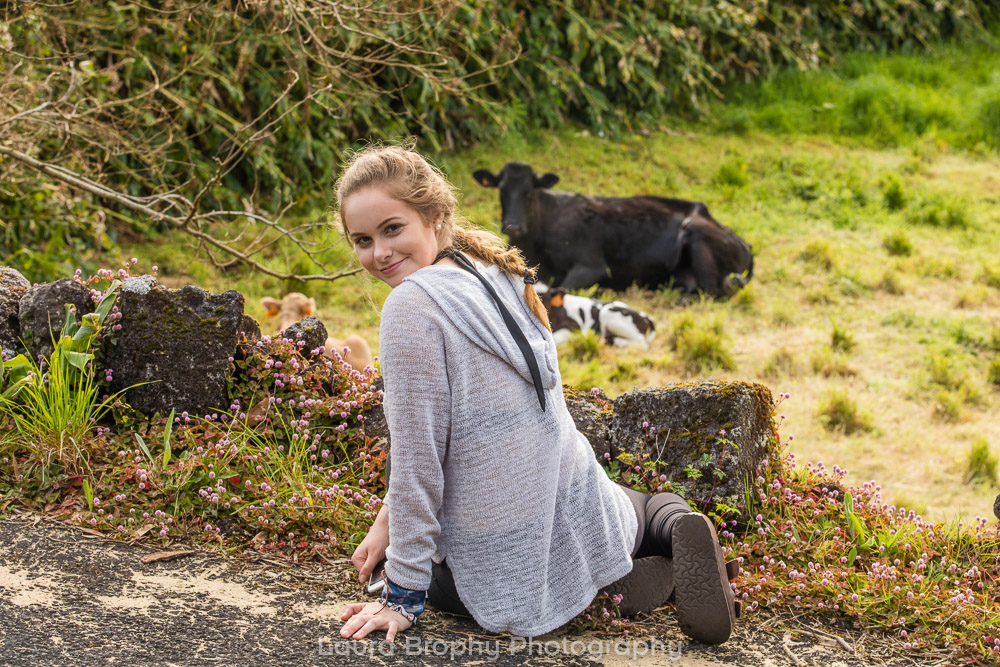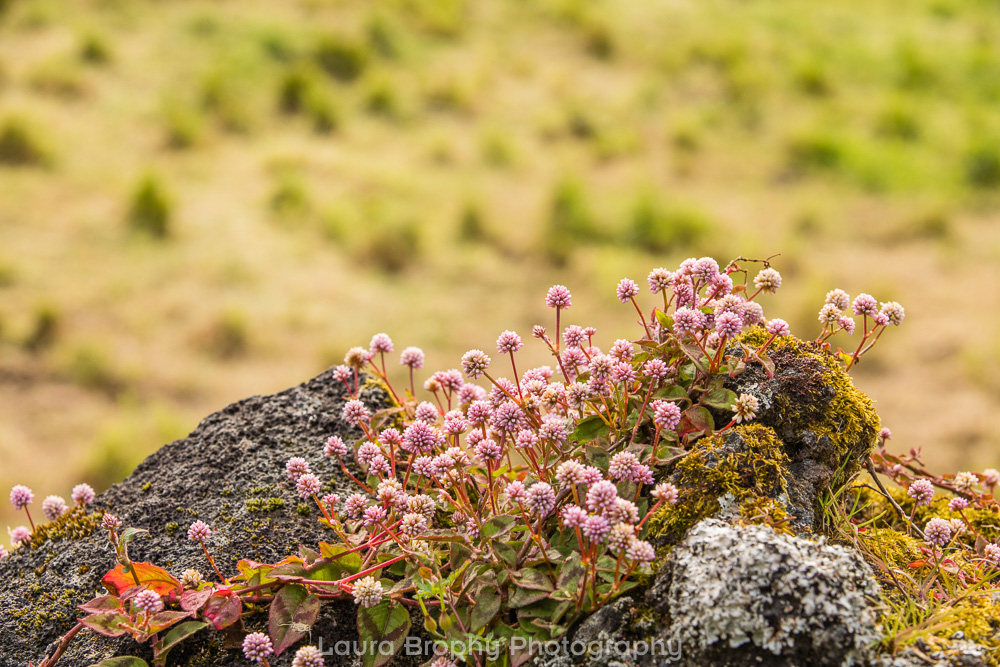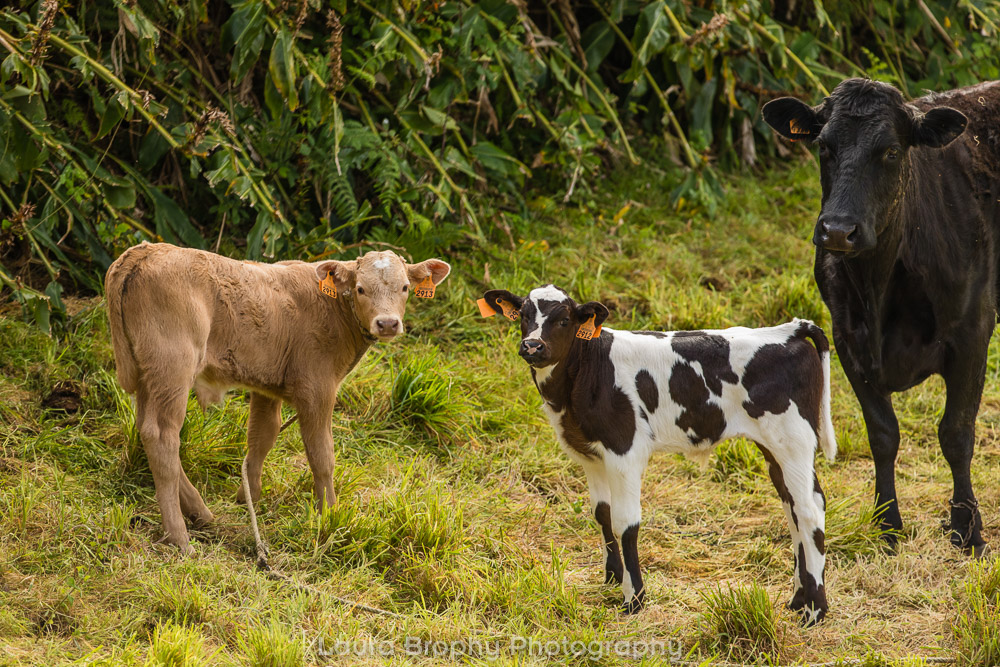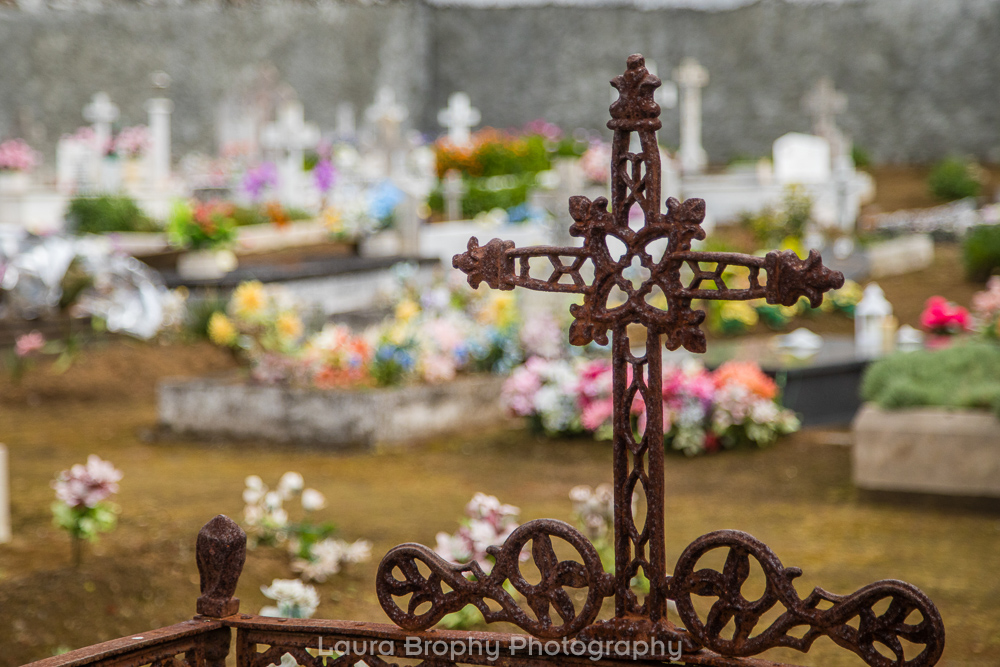Our first big activity planned for Pico was whale watching with Espaço Talassa in Lajes do Pico. It was a beautiful afternoon, but we learned that the seas were rough and that the spotter was not seeing signs of whales in the area. We were given the option to proceed or rebook for the following morning. And so we rebooked, and set off exploring the eastern part of the island.
Most of the time on the island, the top of Pico was in the clouds. We only saw the top from the ground for a few brief minutes, although had a spectacular view of the top peaking out of the clouds when flying in and out. Pico is 2,351 metres (7,713 ft) above sea level, the tallest mountain in Portugal, and more than twice as high as any other in the Azores. It is a commanding presence. I hope to return someday in better weather and better shape to climb it.
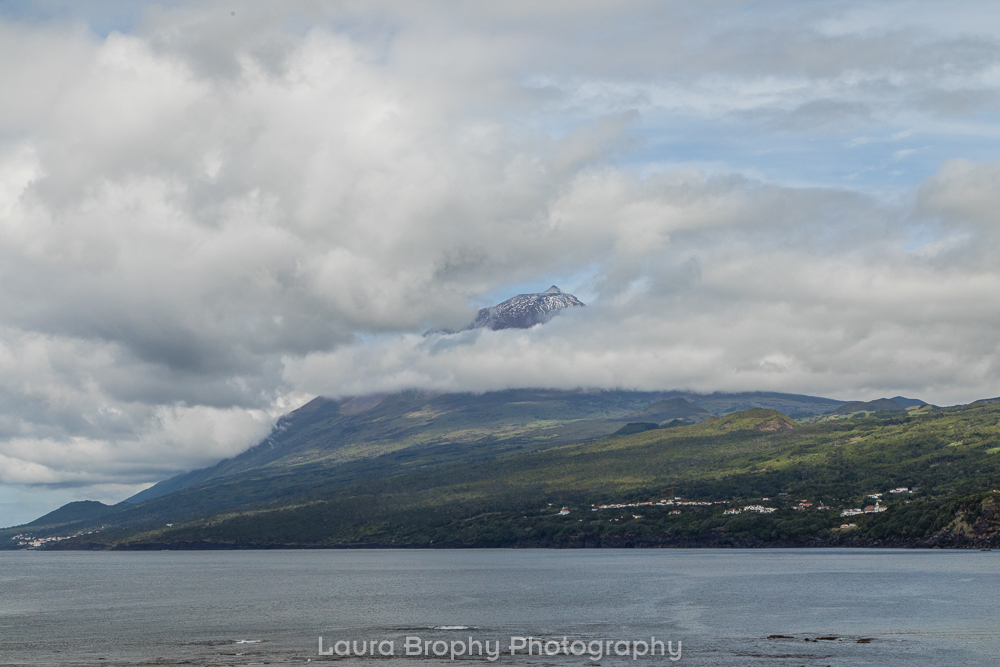
Lajes do Pico is a charming little village, more upscale than most we encountered, with some lovely little shops and cafes, and a sneak peak of the hydrangeas.
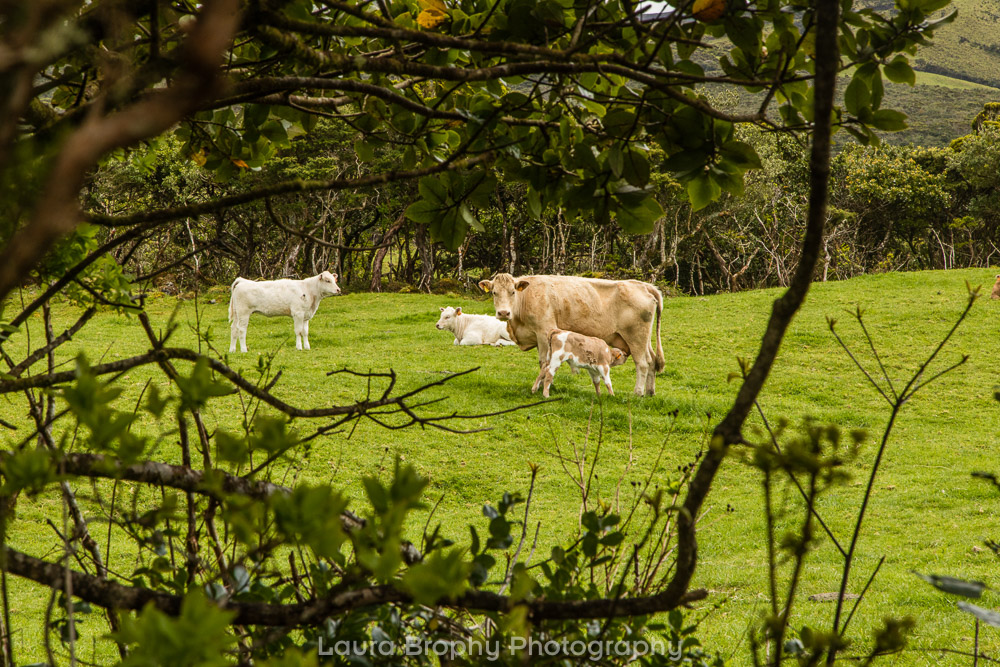
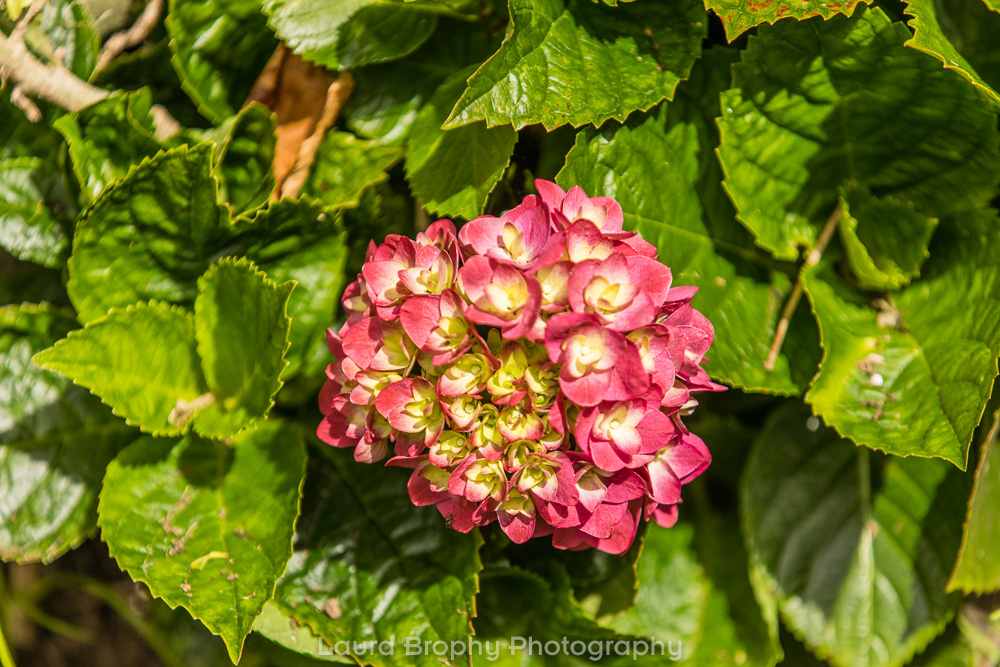
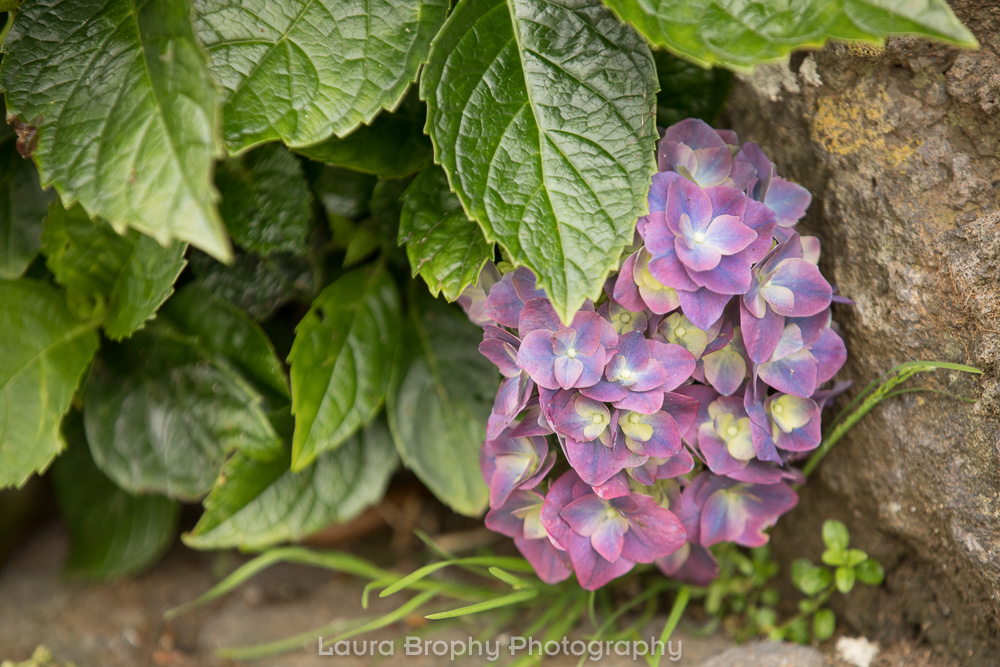
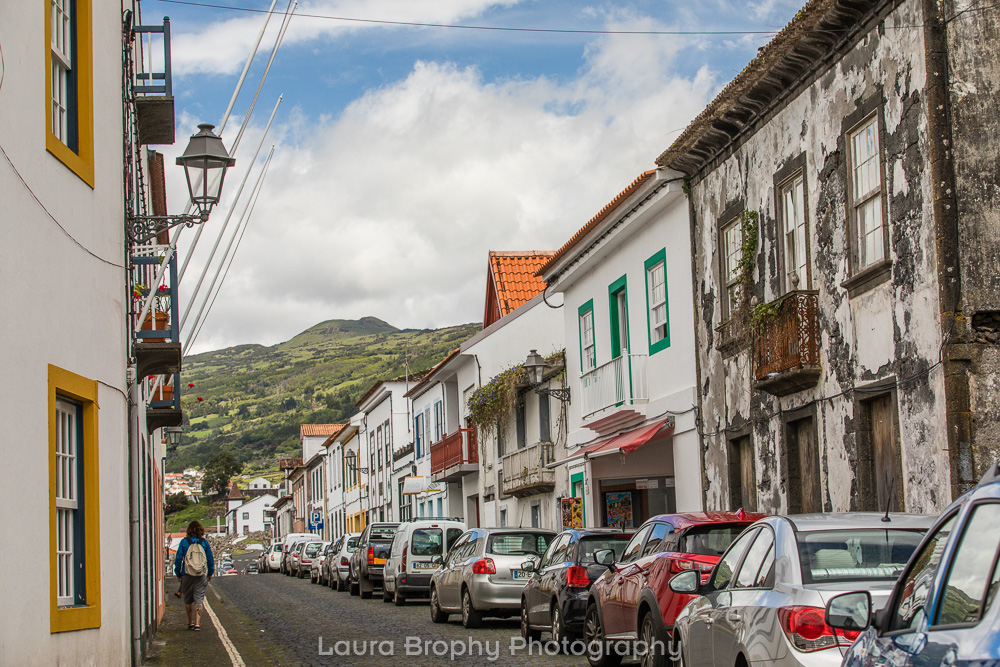
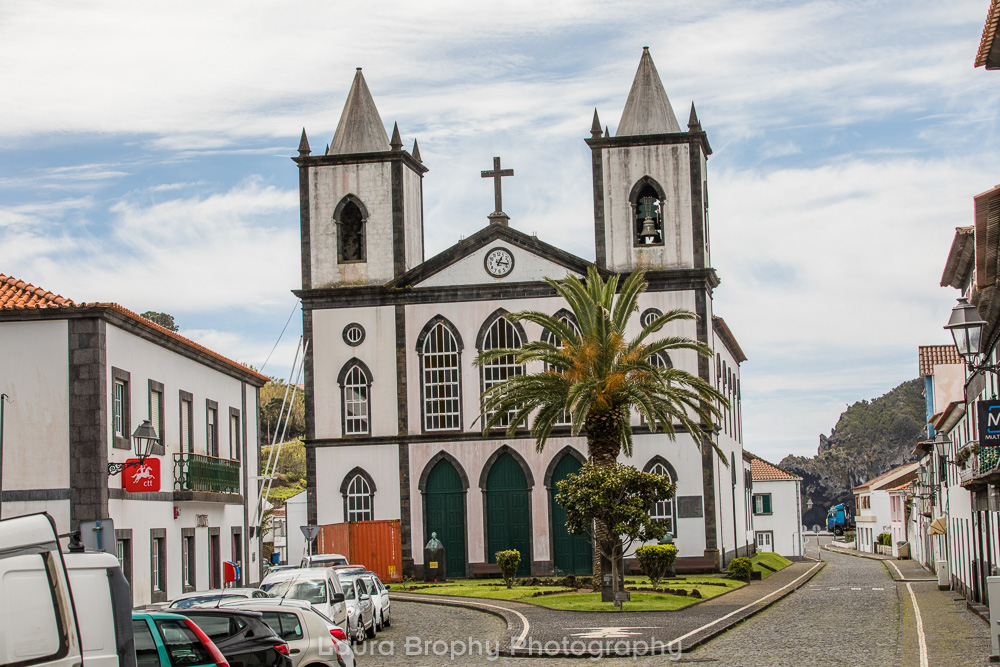
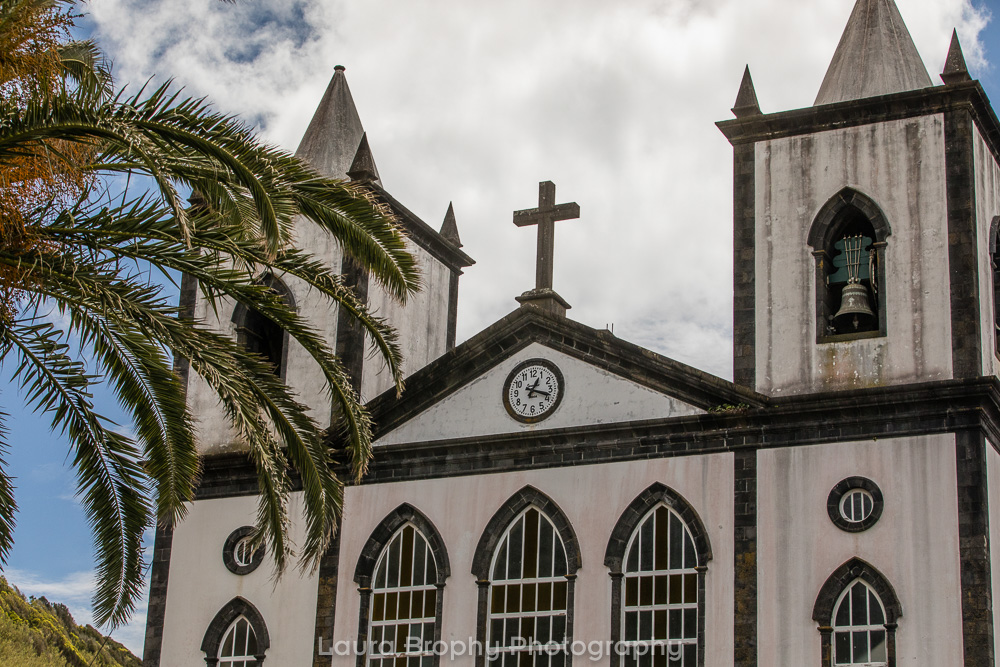
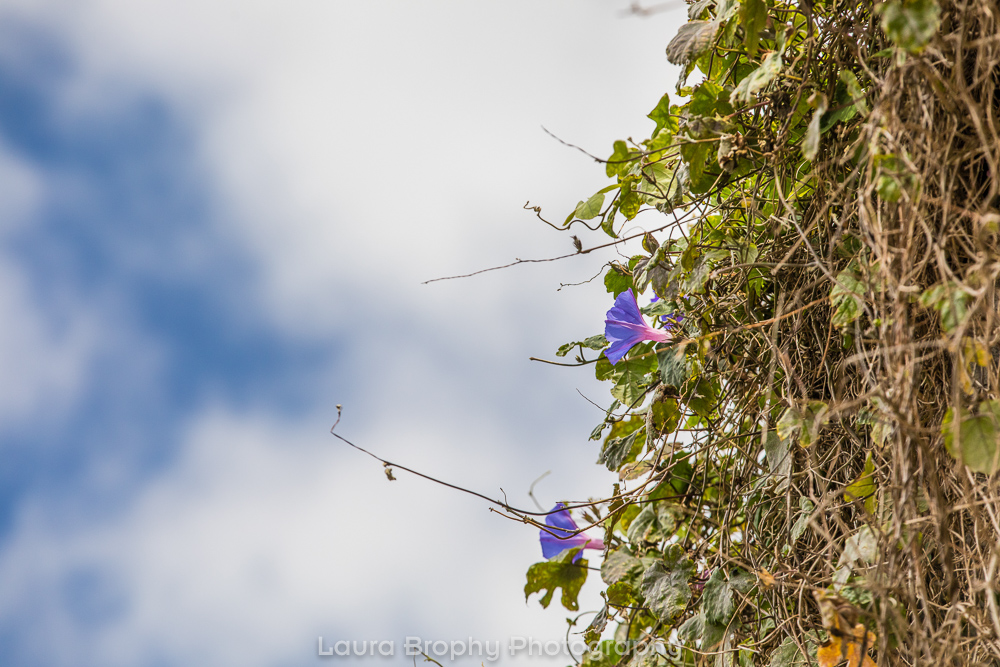

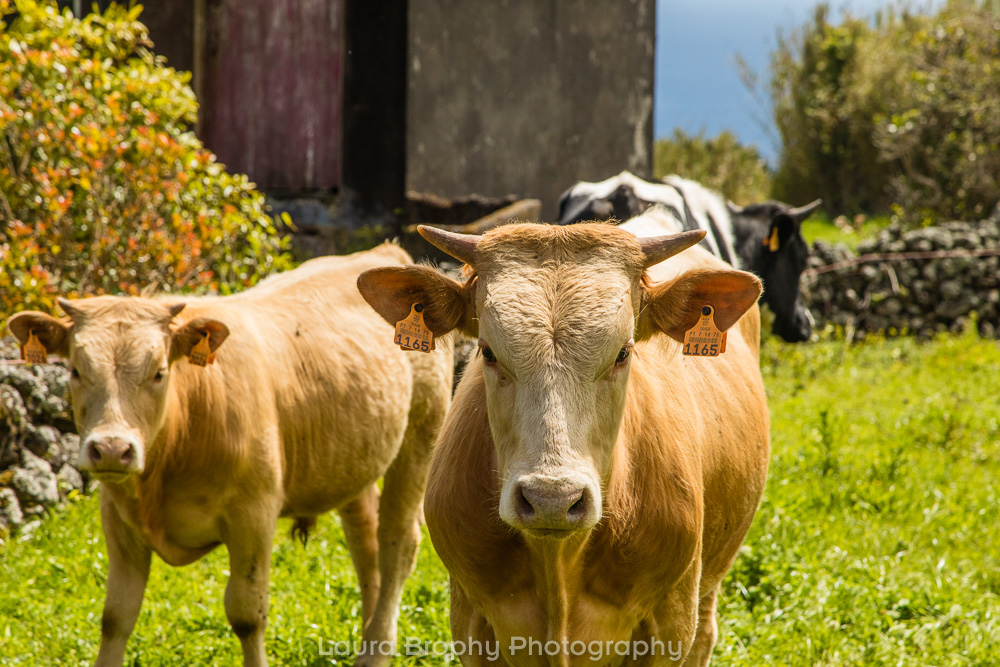 From Lajes, we headed east around the island, checking out many very quiet villages and venturing onto some back roads, some of which turned into dirt roads connecting villages. For perspective, the entire population of Pico is about 15,000, just about the size of our hometown Canandaigua in NY, and it’s spread out over many villages and expansive countryside. The black lava rock is used to build homes and for endless stretches of fence and complex containers for planting, usually grapes, protecting crops from the wind and salt, and building up heat to extend the growing season. Livestock was seen in many small yards.
From Lajes, we headed east around the island, checking out many very quiet villages and venturing onto some back roads, some of which turned into dirt roads connecting villages. For perspective, the entire population of Pico is about 15,000, just about the size of our hometown Canandaigua in NY, and it’s spread out over many villages and expansive countryside. The black lava rock is used to build homes and for endless stretches of fence and complex containers for planting, usually grapes, protecting crops from the wind and salt, and building up heat to extend the growing season. Livestock was seen in many small yards.
Google maps took us on some truly remote roads, way off the beaten path.
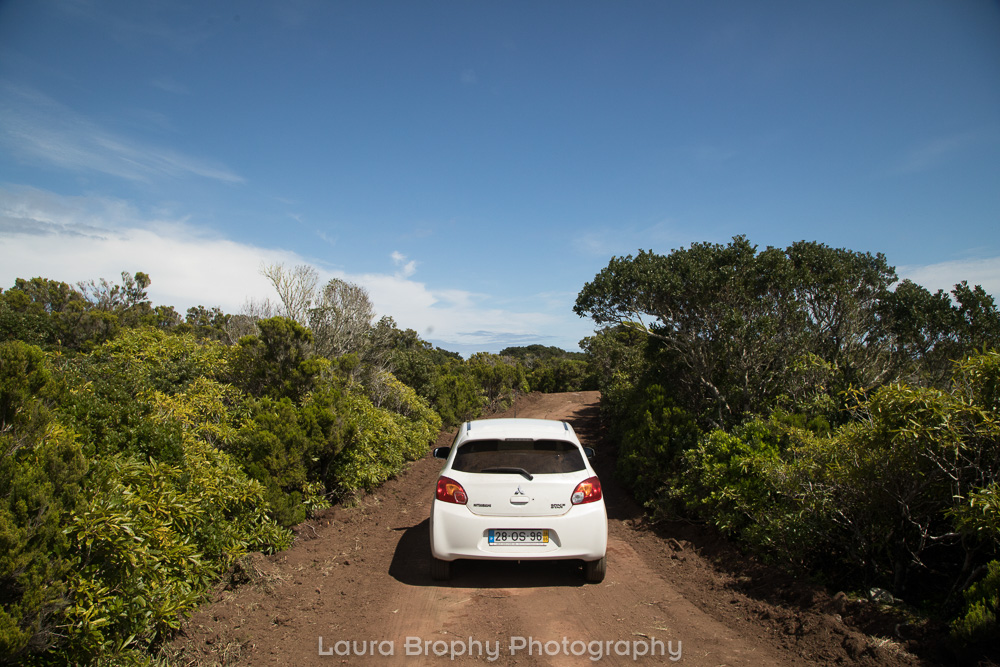 There was a lot of time on Pico visiting with the cows. The roads were remote, and we’d rarely see other cars on the backroads, and the cows were as curious as we were.
There was a lot of time on Pico visiting with the cows. The roads were remote, and we’d rarely see other cars on the backroads, and the cows were as curious as we were. 